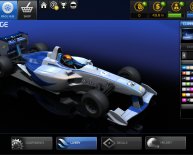
Designing Your own car
Donor production cars used for rallying have included Audi A1, Audi A3, Audi A4, Citroen C4, Citroen DS3, Ford Escort, Ford Focus, Honda Civic, Hyundai Accent, Hyundai i20, Mini, Mitsubishi Lancer, Nissan 240, Peugot 206, Peugot 307, SEAT Cordoba, Skoda Fabia, Skoda Octavia, Subaru Impreza, Toyota Corolla, VW Golf plus many more. Every major manufacturer around the world has examples of their cars in national or local level rallying.
Knowledge Level
There are two approaches to building a rally car: You acquire a rally car kit for your chosen donor car and assemble the car, or you design your own car from your base production model and purchase individual components. The knowledge level you require will depend on which approach you take.
Building a rally car from a kit will require some mechanical skills, but in addition to these you should have a working knowledge of handling, suspension, chassis, powertrain, aerodynamics and safety. Understanding how your car works is important in setup, troubleshooting and improving its performance.
Building a rally car from a basic donor car benefits from advanced knowledge of all aspects of the vehicle (Handling/operation, suspension, chassis, powertrain, aerodynamics, and safety). With a comprehensive knowledge and a study of existing rally car builds (especially top-level), you will be capable of making informed decisions on how to build your car. Component selection itself will have a more thorough understanding which gives additional confidence.
If you wish to make the learning curve more manageable, it is recommended that would-be Rally racers select an appropriate base vehicle and work their way up through competitive classes locally using that vehicle as their "development platform". Many of the available books provide basic to reasonably advanced knowledge in the aspects mentioned above, so they can provide a good reference alongside your experience.
Design Challenges
Suspension: Within the regulations of the sanctioning body class you wish to run in, you will want to design your car with the following goals:
- Protect the driver and co-driver
- Maximize durability. Aspects such as suspension mounts, suspension components, skid plates, etc. that stand a good chance of breaking if not up to the task. Metal fatigue is also an issue in cars where the suspension is subjected to repeated shock loads.
- Maximize grip by minimizing unsprung suspension weight to allow the tires to follow the road surface
- Maximize usable engine power
- Maximize brake stopping power
- Maximize ride height flexibility (with any changes to the suspension geometry taken into account to ensure maximum tire contact patch on the road).
- Maximize visibility (For night stages)
There are many more potential goals, but ideally once the driver and co-driver are confident, giving the car durability, performance and flexibility will enable the driver to extract the maximum from it.
The Roll cage/safety structure will likely help increase torsional rigidity. Lightening the vehicle by removing rear seating, interior panels and other components may be an option. Changes to the placement of components (i.e. Battery) in order to redistribute weight balance can often go hand-in-hand with lightening.

















